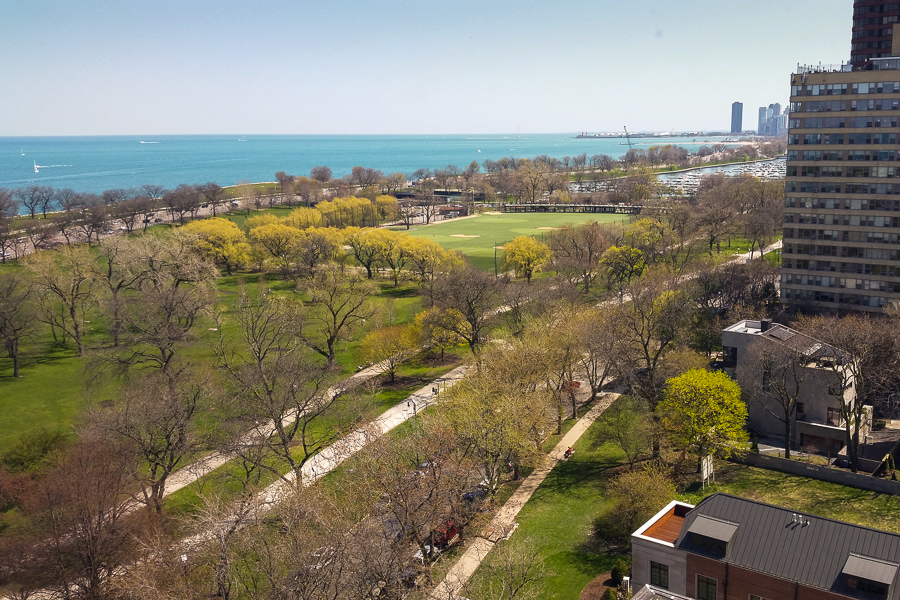It's just past 9am on Monday and already I'm reduced to this kind of blog post. Tomorrow I may have some more time to read these things:
- Cranky Flier analyzes Malaysia Airlines' struggles.
- Microsoft is building subsea fibre cables between the U.S. and Europe and Asia.
- TPM explains exactly what Jade Helm 15 really is.
- Missed Microsoft Ignite this year? Here's the Channel 9 page.
- We're starting to set up JetBrains TeamCity to handle our continuous integration needs. Explain, however, why the user manual is all video? Guys. Seriously. I haven't got time for this.
- So now that Illinois actually has to pay the pensions we promised to pay, what now? (Hello, 9% income tax?)
Four-hour design review session is imminent. I may post later today...or I may lock myself in my office and stare at the wall.
The USGS has put all of their topographic maps online. All of them. Back to 1880.
Enjoy.
If you want this view:

...let me know. The apartment will be available July 1st. I'll post the listing once it's up.
Citylab has a must-read on Spiro Agnew and the legitimization of right-wing suburban fears that led to the current policing crisis in America:
Initially, Governor Agnew offered a rather moderate response to the riot. But he soon took the lead of a conservative backlash that blamed radical agitators (that should sound familiar) and liberalism for nurturing black misbehavior. Agnew's pivot to the right came as the riot subsided, on April 11, when he met the state's mainstream black leaders and accused them of harboring a "perverted concept of race loyalty" that "inflamed" militants. Baltimore's fires were not "lit from an overwhelming sense of frustration and despair," he said, but were instead "kindled at the suggestion and with the instruction of the advocates of violence," like Stokely Carmichael.
Agnew, who served as executive of Baltimore County before his election as governor, became the consummate new right suburbanite. Indeed, he was the nation's first high-profile suburban politician, according to Levy. Agnew was Nixon's attack dog, holding up the ideals of Nixon's silent majority over the loud minorities in the streets and promoting a conservative manliness in the face of what he saw as an effeminate liberalism that indulged black and student protesters. And for many suburban voters, he provided a more sober alternative to the rabid George Wallace.
There's a straight line from the civil unrest in 1967 and 1968 to the anger we're seeing today. People have been saying for years that increased policing and incarceration is not helping anyone. And here we are, less than 50 years from the last time we failed to deal with the problems faced by cities, facing the same problems again.
To read:
Back to cleaning up after a production bug this weekend.
Wow, I have a lot of things on my Kindle. And I'm adding more:
Back to debugging...
Photo: Chicago at night. Note the yellow-orange sodium vapor lamps.

Now that Chicago's bike share has hundreds of stations, its efficiencies are becoming clearer:
But what about convenience? Recently Divvy held its second annual data visualization challenge, and one of the winners, by Shaun Jacobsen at Transitized, compares the speed of Divvy with the speed of the CTA. And Divvy wins by a nose.
Jacobsen’s “Who’s Faster” project starts with a look at the 1,000 top “station pairs"—i.e. the places that people most often go from point A to point B using Divvy. Then, those are compared to the same route on the CTA at noon on a Monday.
And a couple patterns emerge. One is that the bulk of station-to-station trips are faster, centering on five minutes’ savings. It might not sound like much, but it adds up; Jacobsen calculates 32,023 hours saved over 571,634 trips. The other is that the most heavily-used station pairs tend to save more time than less frequently-used ones, as if people are starting to figure out how it works.
Cool stuff.
After almost two years, the trail opens June 6th:
Built on a long-defunct railroad line, the trail runs through Bucktown, Wicker Park, Logan Square and Humboldt Park. Work on the $95 million project began in fall 2013. Take a look at the path under construction.
When the trail opens, four of the access points will be through ground-level parks: Walsh Park, 1722 N. Ashland Ave.; Churchill Park, 1825 N. Damen Ave.; Julia de Burgos Park, 1805 N. Albany Ave.; and Park 567, 1805 N. Milwaukee Ave.
When completed, the 606 it will include six parks, an event plaza, an observatory, art installations, educational programming and other amenities, Emanuel said in a news release.
Parker and I will take a hike on it as soon as practical—possibly June 7th.
...and also preparing for a fundraiser at which I'm performing tomorrow:
And did I mention Apollo After Hours?
The Trib expects noise complaints to take off:
The Federal Aviation Administration is expected within the next four months to release a preliminary report based on thousands of computer-generated flight simulations involving what will become O'Hare's fifth east-west runway and a subsequent runway that the city plans to open in 2020.
All this work, however, might not bring relief after a record year for O'Hare jet noise complaints. The simulations are aimed in part at finding the best way to squeeze in hundreds more daily flights at the airport.
Suburbs expected to hear more jet noise as the result of the 7,500-foot runway opening this fall include Bensenville, Franklin Park, Wood Dale, Bloomingdale and Addison, FAA and city aviation officials say.
So, people in Bensenville—which lies along the southern edge of O'Hare and is notable for its immense rail classification yard—are unhappy with their noisy neighbor. Keep in mind, the runway plans have been around for over 10 years. And jet noise today is far lower than before.